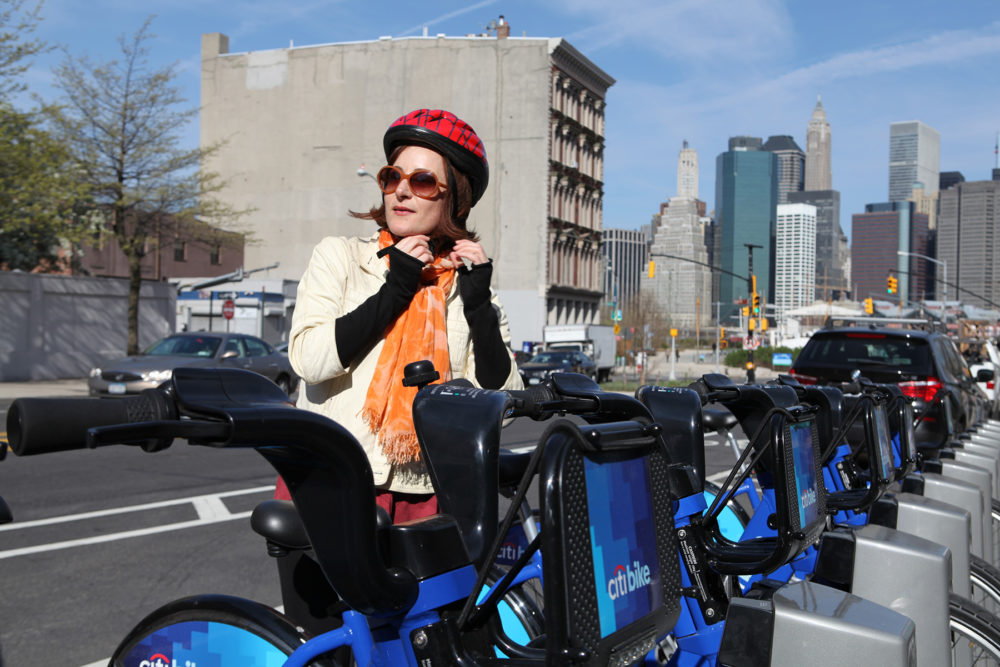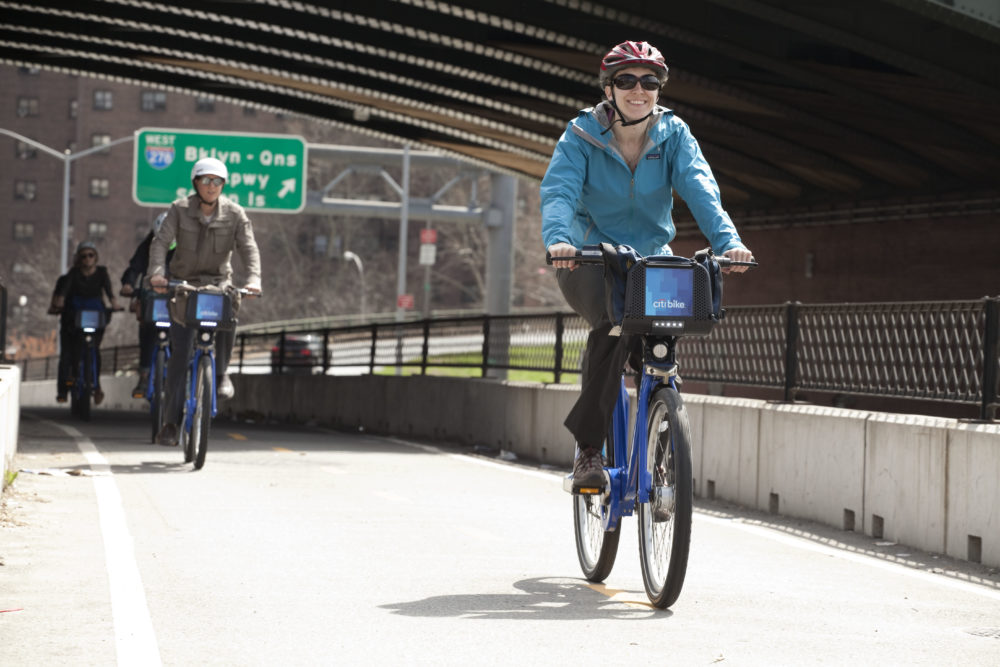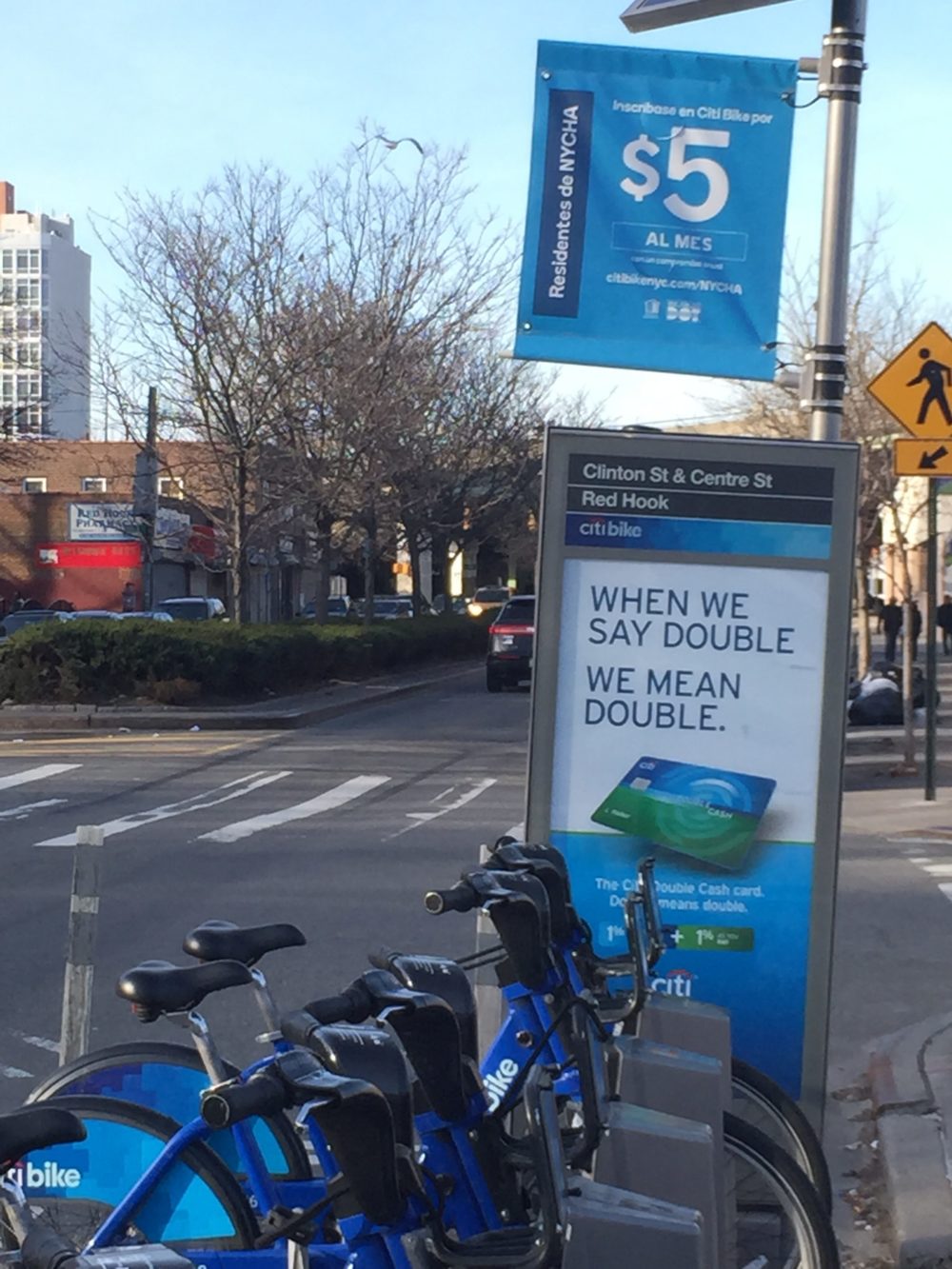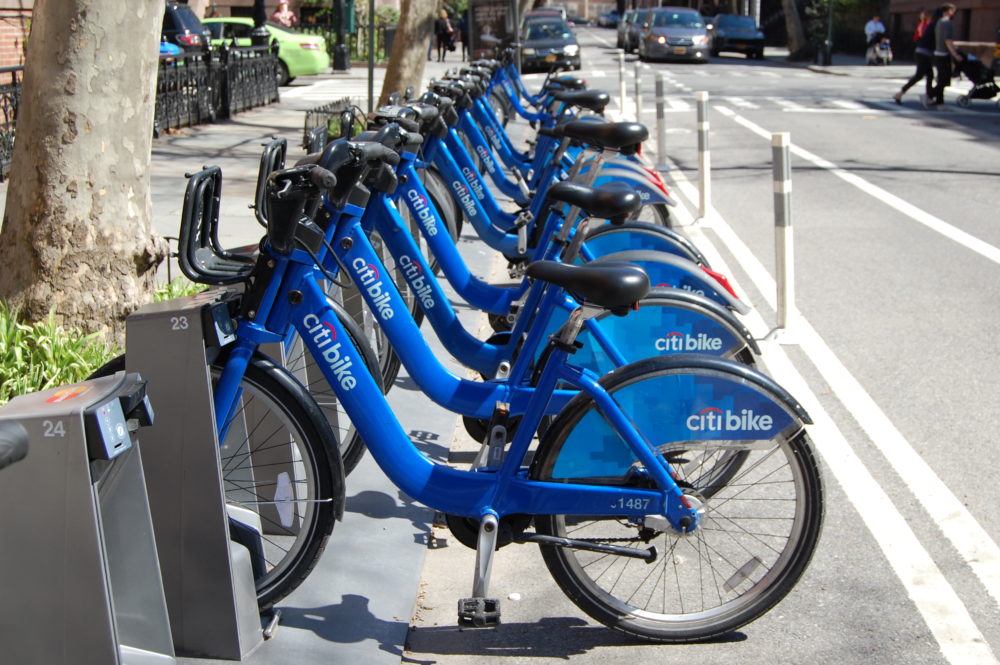Five Things You Might Not Know About Citi Bike
The bike-share program, run by Brooklyn-based Motivate, is growing even more this year, to 12,000 bicycles
Getting ready to ride at a Citi Bike dock (Photo courtesy of Citi Bike)
While Citi Bikes are available year-round, the arrival of warm weather has suddenly filled up the bike lanes with the sturdy blue vehicles. Expect to see even more. Citi Bike will expand locally by another 2,000 bicycles this year, bringing the total to 12,000, at more than 700 docking stations around New York City. Trips taken last year totaled 14 million. (Peak ridership day so far: Oct. 19, 2016, with 69,758 rides.) The Citi Bike program is run by Brooklyn-based Motivate, which has bike-share operations in several other cities including Boston, Chicago, Washington, D.C. and Portland, OR. Earlier this year, a firm co-founded by Al Gore invested in the company, fostering its expansion. To get an inside look at this growing phenomenon, The Bridge talked with Motivate’s New York City general manager and its director of communications and external affairs. Their edited comments:
1. Citi Bike uses riders to help disperse the bikes in stations where they’re needed; riders can get rewards for their work
Jules Flynn, New York City general manager: “We know that one of the most important things for our customers is that if you want to use Citi Bike, there needs to be a bike where you want to start and there needs to be a dock where you want to finish. We use pedal-powered vehicles and [motorized] vehicles to move bikes around, we have a 24/7 operations center that is monitoring the service network and using pretty sophisticated analytics to guide how we intervene and move bikes around, and we have valets at certain stations which will allow us to receive a large number of bikes where there’s peak demand. So we do a bunch of things, but one of the things that’s caught a lot of people’s attention is this program called Bike Angels, where we’re incentivizing and engaging our customers to help us solve that challenge.”
2. Women use Citi Bike less often than men do. To address this, Citi Bike has launched a Women’s Bike Month

A group of riders on Sands Street in Brooklyn (Photo courtesy of Citi Bike)
Dani Simons, director of communications: “Women still make up far less than 50% of our members [about 33%] and so last year we held our first-ever Women’s Bike Month to try to start to reach out specifically to that audience. I think that’s really important and we’ll be doing that again this year in September. Bike share is a great gateway for women. It makes it a little bit easier to get a bike without having to commit to owning your own and it allows women to be a little bit more flexible in how they travel around. The bikes are very sturdy and comfortable to ride for people of a variety of sizes so it’s a nice way to kind of start your journey into bicycling.
“Overall in the general cycling population, women [are] way less than 50% of the cyclists on the street. I think it’s overall just an issue with women in big cities. Some of it is about comfort on the streets and wanting to feel safe. I’ve done a little bit of focus-group research about this. There are concerns about personal appearance; in New York it’s definitely true if you have to look a certain way when you show up. I think women are worried about whether they can do that [on a] bike. And then I think women often take on more of the family-maintenance work and perhaps if you have to drop the kids off before work it might be harder to work-in biking.”
3. Citi Bike has a program for New York City Housing Authority residents, charging only $5 per month (vs. $14.95)

A dock promoting the $5 monthly rate near the Red Hook Houses (Photo by Steve Koepp)
Simons: “The other group that we are looking at is trying to get more lower-income residents riding bikes. We have an amazing program for residents in New York City public housing where they can join for just $5 a month, which makes it a really affordable transportation option. We have a whole marketing campaign around that, an outreach campaign. We have vastly grown the number of people enrolled through that program in the last couple years and we’re definitely looking to do more.”
4. Many of the company's mechanics are hired locally via a youth program
Simons: “We’ve hired a lot of our mechanics through a program called Recycle-A- Bicycle, which is based in in Dumbo. It’s a job-training program for youth, and some of them have become our top mechanics. Some have started here and now work for our other systems across the country. I think people see the bikes out there and they don’t necessarily see the staff at the stations. But there are hundreds of people that it actually takes to make this program run, both in terms of rebalancing [inventory] and in terms of keeping the bikes in good repair.
“Most recent bikes that we’re putting out on the streets in the last couple years are made by us, actually. We source the parts globally and we’ve been assembling them for the last couple years in the U.S.”
5. Citi Bike stations are coming to Crown Heights, Astoria, and between 110th and 130th streets in Manhattan

A docking station on Kane Street in Cobble Hill (Photo by Steve Koepp)
Simons: “People at the workshop I was at in Astoria were very excited to see this coming and very, very positive. And I think for them, long overdue. I would say people in Crown Heights are excited, but also had a lot of questions about the program, about how it works, and want to know more. Not everyone in all these places think that they’ll use it necessarily, but I think more and more people understand that their neighbors and their friends will use it.
“I think that wherever we go, people are concerned about parking. And so I think in some of those more residential neighborhoods people have a preference for putting the stations in plazas or on wider sidewalks, on the verge of the parks instead of in parking spaces. But I don’t think people are saying we don’t want it here. We’ve heard from some council members in Brooklyn who feel like it’s important in terms of people being able to connect to local business districts. Right now if you live in Park Slope, getting over to Crown Heights isn’t necessarily easy. This is a way to link different commercial zones. I think that people in Crown Heights also get that it’s a quicker way to get to the express trains. You can skip the local stops and get to the express because that will help shave off time from commutes.”













